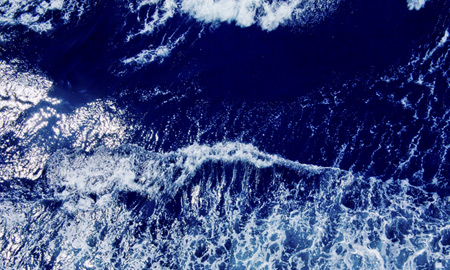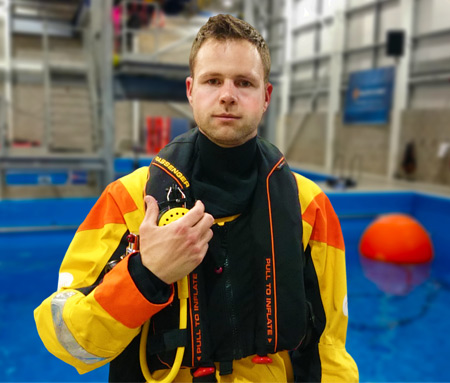North Sea Super Puma Crash: Lessons Learned

It has been 11 months since the Super Puma helicopter crash that killed four offshore workers travelling between a North Sea platform and the Shetland Islands. During that time, a number of measures have been taken by the UK Civil Aviation Authority, aircraft operators and the oil and gas industry itself designed to improve the safety of flights between the mainland and oil platforms on the UK Continental Shelf.
The initial aftermath of last August's fatal crash was characterized by a refusal among some workers to travel on certain variants of the Super Puma, while Total E&P UK even chartered boats that anyone needing to get to its North Sea platforms could use as an alternative to flying.
Last year's crash – of an AS332-L2 Super Puma – followed two ditching incidents in the previous year involving a different variant of the Super Puma, the EC225. The EC225 incidents had themselves been reminders of the 2009 Super Puma crash that saw 16 people killed – the biggest loss of life in a helicopter incident in the North Sea in two decades.

After months of investigation by Eurocopter (now Airbus Helicopters) the root cause of 2012's two ditchings – fatigue in the EC225's bevel-gear vertical shaft – was identified and the problem resolved, meaning that the variant returned to service just weeks before the August 2013 crash involving the AS332-L2.
As far as the industry is concerned there are no longer any question marks over the EC225. Oil & Gas UK Health and Safety Director Robert Paterson recently told Rigzone that the industry is satisfied the helicopter is safe to fly given that "the EC225 gearbox has been the most-examined part of a helicopter ever".
Even so, this month a Bristow EC225 was reported to have leaked fluid – which meant that workers had to spend two additional days on a North Sea rig. Bristow has since put the aircraft through a full inspection and declared it serviceable.
Meanwhile, the cause of the August 2013 crash is yet to be determined, with the industry still awaiting the definitive results of the UK Air Accidents Investigations Board (AAIB) inquiry into why the AS332-L2 variant of Super Puma crashed. What is known is that the AAIB has stated that there was no evidence of technical failure causing the crash and, although four people died in the incident, 12 other passengers and two crew members escaped from the aircraft.
Then, earlier this year, the AAIB issued a bulletin in connection with the August 2013 crash in which it highlighted a safety concern relating to pre-flight safety briefings on the functionality of emergency equipment provided to them for UK North Sea offshore helicopter flights. This bulletin focused on emergency breathing systems – which, although not required by regulatory authorities, had been introduced in UK offshore helicopter operations as a voluntary industry standard – and on hybrid systems in particular. The AAIB recommended as a "safety action" that the pre-flight briefings include information to explain that the hybrid emergency breathing system contains its own air supply that is discharged automatically, making the system usable even if the wearer has not taken a breath before becoming submerged.
In February of this year, the Civil Aviation Authority announced a raft of helicopter safety measures that included a requirement that all passengers have better emergency breathing equipment to increase underwater survival time – unless the helicopter is equipped with side floats. The separate AAIB bulletin had made the point that in about 60 percent of all helicopter water impacts the helicopter inverted or sank, either immediately or after a short delay.
Following the CAA's action, safety and survival training company Survivex launched July 8 the first training course that focused on how to use an updated lifejacket and Category A emergency breathing system. This new system is an improvement on the existing system by being capable of being operated with one hand so that the mouthpiece can be deployed within 12 seconds. Survivex said that more than 100 offshore workers successfully completed the 90-minutes course on its first day.
Other measures announced by the CAA to improve helicopter safety included:
- Prohibiting flights in the most severe sea conditions, so that the chance of a ditched helicopter capsizing is reduced and a rescue can be safety undertaken
- Passengers will only be able to fly if they are seated next to an emergency window exit (unless helicopters are fitted with extra flotation devices or passengers are provided with better emergency breathing systems)
The CAA also said that there would be important changes to the way pilots are trained and checked, while the organization will take on the role of approving each offshore helideck to ensure strict safety standards are met.
It would be wrong for Rigzone to speculate about what exactly occurred in the August 2013 AS332-L2 helicopter crash before the ultimate findings of the official AAIB inquiry have been published, but the actions taken by the CAA and the industry itself suggest that lessons have been learned from the accident and appropriate safety measures adopted.
WHAT DO YOU THINK?
Generated by readers, the comments included herein do not reflect the views and opinions of Rigzone. All comments are subject to editorial review. Off-topic, inappropriate or insulting comments will be removed.
- ITEM Club: More Jobs Losses Expected in NE Scotland due to Oil Slump
- Shell Q&A: What Makes an Ideal Employer in Oil, Gas?
- Shell Takes First Place in Rigzone's Inaugural Ideal Employer Survey
- UK Government 'Must Recommit' to Oil, Gas Sector in Autumn Statement
- UK Government Gives Go-Ahead for Fracking in NW England
- How Likely Is an All-Out War in the Middle East Involving the USA?
- Rooftop Solar Now 4th Largest Source of Electricity in Australia
- US Confirms Reimposition of Oil Sanctions against Venezuela
- EU, Industry Players Ink Charter to Meet Solar Energy Targets
- Analyst Says USA Influence on Middle East Seems to be Fading
- Russian Ships to Remain Banned from US Ports
- Brazil Court Reinstates Petrobras Chair to Divided Board
- EIB Lends $425.7 Million for Thuringia's Grid Upgrades
- Var Energi Confirms Oil Discovery in Ringhorne
- Seatrium, Shell Strengthen Floating Production Systems Collaboration
- An Already Bad Situation in the Red Sea Just Got Worse
- What's Next for Oil? Analysts Weigh In After Iran's Attack
- USA Regional Banks Dramatically Step Up Loans to Oil and Gas
- EIA Raises WTI Oil Price Forecasts
- How Likely Is an All-Out War in the Middle East Involving the USA?
- Venezuela Authorities Arrest Two Senior Energy Officials
- Namibia Expects FID on Potential Major Oil Discovery by Yearend
- Oil Markets Were Already Positioned for Iran Attack
- Is The Iran Nuclear Deal Revival Project Dead?
- Petrobras Chairman Suspended
- Oil and Gas Executives Predict WTI Oil Price
- An Already Bad Situation in the Red Sea Just Got Worse
- New China Climate Chief Says Fossil Fuels Must Keep a Role
- Oil and Gas Execs Reveal Where They See Henry Hub Price Heading
- Equinor Makes Discovery in North Sea
- Macquarie Strategists Warn of Large Oil Price Correction
- DOI Announces Proposal for Second GOM Offshore Wind Auction
- Standard Chartered Reiterates $94 Brent Call
- Chevron, Hess Confident Embattled Merger Will Close Mid-2024
- Analysts Flag 'Remarkable Feature' of 2024 Oil Price Rally



